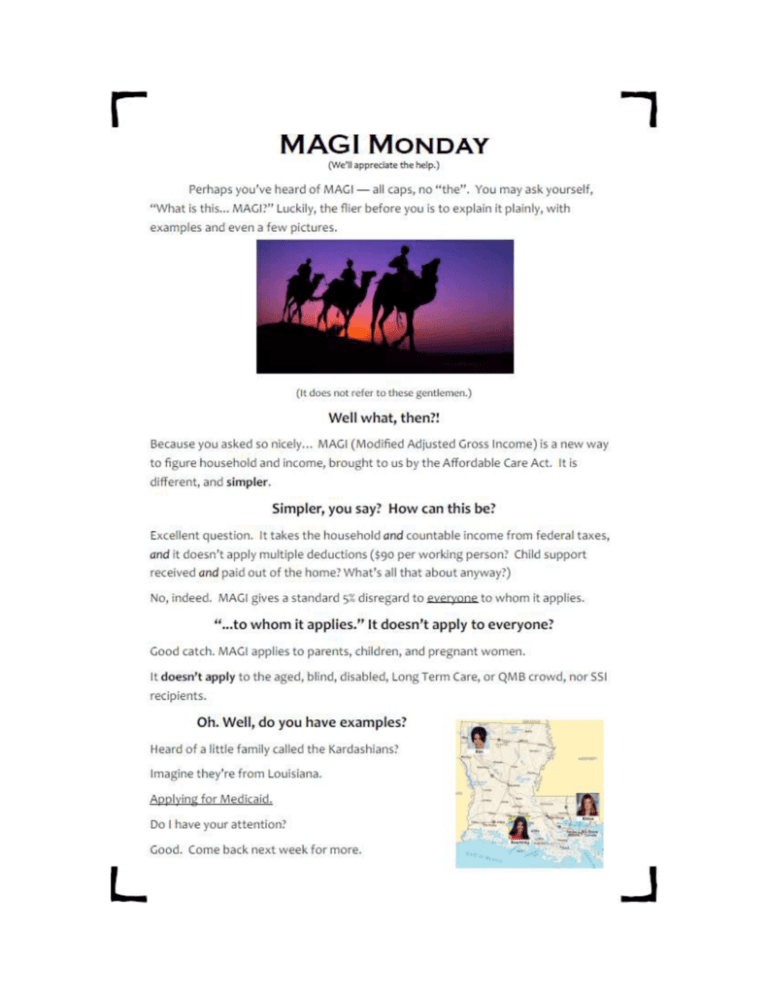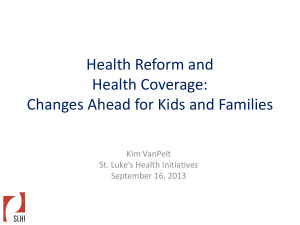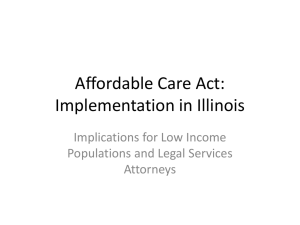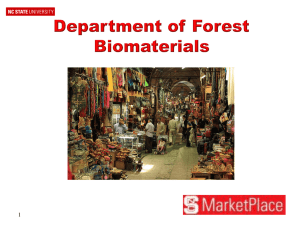louisiana_training_-_magi_mondays
advertisement

MAGI Monday! (It’s about to get a little soapy.) Edition 3 – March 18, 2013 In our last installation of We left Kourtney, Scott, Mason and Penelope in Louisiana, gainfully employed and the children in Medicaid under the new MAGI rules. But there are storm clouds on the horizon, and trouble in paradise… ...in the form of one Jay Paul Molinere, home-grown gator-hunting heartthrob extraordinaire, whose lucrative reptilian pursuits, ease on the eyes, and network ratings captivate our clever Kardashian into kicking Scott to the curb and joining our Louisiana man in blissful matrimony. That’s right. Kourtney up and ties the knot with J.P. at the Justice of the Peace in Houma, reception to follow at the local VFW. <—- fig. 1-A: the face that wrangled a thousand gators and wrecked a happy home. And not very long after, the time comes for a redetermination. No, not of our values as a society, silly — for the children’s coverage. J.P. and Kourtney filed taxes together with the children in the household (after a dramatic Indian leg-wrestling match with Scott over who would claim them — refer to fig 1-A if you are unsure of who won). They report on their renewal form: * Kourtney, even more famous now as swamp royalty, makes $2,200/month modeling some new LUXE brand hip-waders. * J.P. gets $2,500/month between Swamp People and MMA appearances (everyone wants a round with Mr. Kardashian). * The rich fan, disgusted with the fiasco, stopped sending money, but it’s okay — one of J.P.’s cousins is all too happy to babysit the little Kardashians for free, and Scott sends along $500/mo in child support, which is not taxable. * No one is claiming a disability, and there are no medical bills to report. How will our sordid budget play out, under today’s rules, and under MAGI? Household Currently Under MAGI 3: Kourtney and kids 4: STEP-PARENTS COUNT! $2,200, LUXE hip-waders Kourtney: $2,200, LUXE hipwaders $500 in child support J.P: $2,500, Swamp People/MMA Monthly income $90 for 1 working adult Deductions $50 from child support Countable income $2460 A flat 5% of total, which is $235 $4465 EGADS!!! Quite contrary to now, MAGI counts J.P in the income unit and includes his earnings, bringing the household size up as well as the total countable income. Since the child support is not taxed, it is left out. Still, we see that the final countable income is way higher under MAGI than today’s rules. Where the kids would be eligible under LaCHIP, with MAGI they would sail right over the income limit and land instead in the LAP of luxury (once more, punless: they’d be eligible for LaCHIP Affordable Plan.) While this whole “marry the Molinere and make too much money” may not sound like strife, please, come again next week. I’ll have an alligator’s mouthful of it for you. (non-) MAGI Monday! #5 – April 1st, 2013 When you’ve been around the block a few times, you learn the tricks of the trade. This analyst has seen it all. From men putting themselves on PW applications, to children born a year in the future – if it can go wrong on paper, she’s caught it and fixed it before the date stamp hit the front page. And she’s on the case. ¡SUPER ANALYST! She reviews the application of one J.P. Molinere. He qualified for assistance to buy his own insurance, but something just isn’t right. On his driver’s license, she sees a big tough guy with a goofy grin; on his application, a four year old girl with deplorable handwriting. She sighs. “No disabilities…” she mumbles, turning the page and seeing his wife’s income. “Maybe the little lady filled it out…?” Then she hits the medical expenses section. Scratch marks cover the boxes, half-filled with just enough info for her to know: someone spent quite a while in the hospital. Super Analyst wastes no time, and makes a call to Kourtney. One very long, agonizing phone conversation later, Super Analyst has two very important and completely missing facts: 1. J.P. did indeed have his dominant hand bitten off by an alligator, which makes for both a disability and awful penmanship. 2. Tragedy makes even the stoic go soft – J.P. was so glad to be alive that he adopted both of Kourtney’s children. A second of amazing mental math later she realizes: with J.P. claiming a disability, the determination isn’t MAGI at all… …J.P. could get Disability Medicaid! She gets records together and off to MEDT, and the very next day (she is a Super Analyst, after all) the decision comes through: the gator got him good enough -- he qualifies! She calls Kourtney back, and gives her the good news. “But we already got J.P. health insurance with the tax credit!” the meticulous Mrs. Molinere exclaims. “Ma’am, we’re aware of that”, says Super Analyst. “We let the Feds know when we’ve got you covered – you don’t have to worry.” MORALS OF THE STORY 1. Always pay close attention and ask questions -- circumstances alter cases. But more importantly, 2. If Medicaid finds someone ineligible and they qualify for assistance to purchase insurance, and then (likely thanks to Super Analyst) later finds them eligible, the State will let its Federal partner know so the tax credit can be stopped. We’re talking to the FEDS?! Calm down, this isn’t a crime thriller! Next week we’ll find out a little bit more about who scratches who’s back, and when… Marketplace Monday #1 – April 8th, 2013 Last week, our intrepid Super Analyst found that J.P. was eligible for Disability Medicaid. You may remember that since he didn’t qualify for C-related programs and claimed no disability, he received tax credits with which to purchase private insurance. When he became Medicaid-eligible thanks to our wonderful staff noticing he seemed to be missing a hand, these tax credits ended. Quite apart from your amazement at Ms. Analyst’s hawk eye and J.P.’s obliviousness, you might be pondering how it all fits together. Like this. Sesame Street taught us: “Co-operation makes it happen.” Just like we take SNAP (Food Stamp) and SSI information to automatically enroll eligible people, the Affordable Care Act will have us putting those invaluable kindergarten lessons into practice. HOW? The Feds will run a Health Insurance Marketplace to accept applications for assistance beginning in October 2013. You can take a look atwww.healthcare.gov/marketplace. For Louisiana, they will make eligibility decisions for applicants who apply through the Marketplace and are eligible for Medicaid and CHIP using MAGI. If there are applicants who claim a non-MAGI category (aged, blind, disabled), their application will roll down to us for review in other programs. A tax credit amount and cost-sharing reduction will be calculated for anyone who does not qualify for a MAGI-based Medicaid or CHIP program and has income between 100% and 400% FPIG, which they can then use on the Marketplace to purchase insurance, if they lack it, or to reduce the costs of their existing insurance. As we saw last week, if the person is later found eligible for full coverage Medicaid, we will let our Federal partners know to cancel the tax credit. It almost seems as simple as it really is. Come back next week to see a family go to market, and if your horses cannot be held, here is a video from CMS explaining it with stick people. Marketplace Monday #2 – April 15th, 2013 One marvelous aspect of storytelling is authorial license: that is, the liberty to fit the narrative to a purpose. Our purpose today is to feed the Marketplace an application to see all the ways it can go down at the Federal level. And what liberties shall we take? Oh, just time travel through parallel universes. But not this far! → Let’s go back to a time after Kourtney found the love of her life, but before he became a candidate for a hook-hand… [link to MAGI Monday #3 for recall of household composition] We’re going to switch it up, not once, not twice, but three times. And remember, as long as it’s for the story, it’s all good. First! Kourtney and J.P. decide that a life of modeling swamp footwear and wrestling gators for profit is no life at all, and become Buddhist monks living in simplicity and poverty with the kids, who he adopts because, well, why not? But in moving from their modern home to a hand-built mockup of a Tibetan monastery, they forego one very important modern convenience (mosquito screens), and so all contract malaria and have to apply to the Marketplace. The swift, short story: Family of four with minor children and no income whatsoever. No one claims a non-MAGI category (i.e. disability claim). The Marketplace finds them all MAGI-eligible, and hands them down to Louisiana Medicaid as a LIF-C family. And then! Kourtney and J.P. decide that a life of modeling swamp footwear and wrestling gators for profit is so tedious that they join the circus as clowns. J.P. adopts the kids to make a clown family comedy routine, because they only pay each adult $500 per month and children should pull their weight, too. But the children are allergic to grease-paint, and so they apply to the Marketplace, though they include the two adults as having disabilities… because, well, clowns. Fast and frenetic frame-up: Same family, only $1000 per month income, no bills, and the adults are obviously D-related, mental. The Marketplace finds the children MAGI-eligible in CHAMP and Kourtney, too, but only in Family Planning, and passes that information to Louisiana, but also hands over Mr. and Mrs. Giggles for further review under Disability Medicaid. They’ll qualify for assistance in getting insurance through the Marketplace in the meantime. But finally! Kourtney and J.P. decide that a life of modeling swamp footwear and wrestling gators for profit is simply not enough. They have big dreams, and they won’t settle for less, so they both take on roles as high-powered consultants for Oprah. But since neither is very keen on reading through their consulting contracts, they fail to notice that the bulk of their “salary” comes in the form of a luxury houseboat, a lifetime of complementary dental work, and free copies of the Oprah’s Book Club Book of the Month. The cold, hard direct-deposits only come out to $5,500/month between them both, and it doesn’t include health insurance! Off to market they go. The down and dirty disposition: Income of $5500 per month (above LIF-C, LaCHIP, LAP limits for 4 people, but below 400% FPIG), no disabilities nor bills. The Marketplace finds everyone ineligible under MAGI. No non-MAGI category was claimed, so the Marketplace refers nothing to Louisiana Medicaid for determination, and instead calculates a tax credit amount that the Kardashian-Molineres can use to buy their own health insurance. Deep breaths, now – zipping across space-time can make the sturdiest of us reach for a Dramamine. While you gather your stomach, think about each of the scenarios we just saw. Just like the difference between yogurt and a fruit smoothie for breakfast versus a deep-fried Oreo and champagne, each change caused the application to be treated differently at every level. According to the circumstances, the Marketplace may handle the entire process or refer the non-MAGI parts to Louisiana. Next week, we’ll turn this time machine around and feed the application to Louisiana instead. Marketplace Monday #3 – April 22nd, 2013 Last week, we had a breakneck fly-through of all the ways an application made to the federal Marketplace can play out. This week we’ll take a slow, gentle look at the process when a person applies to the Marketplace for medical assistance. First, a nicely animated recap of the burning question: what is the Federally-facilitated Marketplace (FFM)? Which is all to say that the Marketplace is just another way for applications to arrive, eagerly awaiting our expert touch. But what comes to us, and what doesn’t? Excellent question! We’ll still receive things from all the sources we do now (FITAP, LIS, internet and paper apps, etc.), but for applications made directly to the Marketplace, this is the pattern: Person eligible under… MAGI Blind, Disabled, Aged FFM Determination. FFM Referral to Automatically Medicaid agency certified in MEDS. for review. Not Medicaid eligible FFM reviews for tax credits Remember that applicants are screened by category, so if a family with two adults and two children applies to the Marketplace and they qualify for LIF-C, then the Feds send us the determination, which will be automatically added in MEDS. And likewise, if that same family applies, and (let’s imagine) makes too much money for the adults to have LIF-C or the kids to have LaCHIP, but one child can qualify in a non-MAGI category (such as FOA), the feds will send a referral on the FOA child and the rest of the family will be reviewed for the tax credits. Just remember, like we learned before: if the person receives tax credits to purchase their own health insurance, but later qualifies for Medicaid, Louisiana will let the Marketplace know so that the tax credit can be cancelled. I’m sure you have your own burning questions, so please send them to Medicaid Eligibility Policy Unit. You never know who might have the same doubts. Marketplace Monday #4 – April 29th, 2013 We’ve become quite familiar with the peculiarities of the Marketplace in the past two weeks, and its purpose as another resource for people seeking assistance with health coverage. Since it’s soon to be a part of our daily lives, I hope the shock of being faced with the unexpected, foreign, and mysterious is gone– with time, it is less daunting. But this is not always true! Let’s return to more comforting territory for a while. We still haven’t learned what role the Marketplace will play when Louisiana Medicaid receives the initial application. Our dear friends, the perennially hapless KardashianMolineres, will guide us through all the ways our determination can go. To recap: The adults are Kourtney, mother to Mason and Penelope, and J.P. is Kourtney’s husband, stepfather to the children. For simplicity’s sake, all this week’s examples are MAGI-only determinations – we won’t deal with Aged, Blind, or Disabled just yet, and we will presume that in each example,everyone is applying. First example: Kourtney and J.P. become rabbit farmers in an ill-advised getrich-quick scheme which ends abruptly in an outbreak of myxomatosis, leaving them penniless. Household Income Certified in Two adults, two children. (Remember to count stepparents under MAGI!) None. Parents in LIF-C, children in CHAMP. This is what already happens today. Yet another example: J.P. is a door-to-door vacuum salesman and brings home $3,000 every month. Kourtney is a housewife who keeps an impeccable home and just so happens to be in “a family way.” Household Income Two adults, two children. Kourtney is pregnant. $3,000/mo minus 5%: Over LIF-C/MNP limits & over 100% FPL, but under 200% FPIG. Certified in The children get LaCHIP, and Kourtney gets PW. J.P. isn’t Medicaid eligible under MAGI due to income. NOTE: Over 100% but under 400% FPIG, so we refer Kourtney & J.P. to the Marketplace to get tax credits for insurance if they don’t qualify in a full-coverage program. Next example: Kourtney and J.P. raise Komodo dragons in an ill-advised getrich-quick scheme and turn their front yard into a roadside lizard show that makes them $2,100/month. J.P. gets bitten by a komodo dragon, and ends up with hospital bills. Household Income Two adults, two children. J.P. has bills. $2,100/mo minus 5%: Over LIF-C/MNP limits & over 100% FPIG, under 133% FPIG. Certified in Children get CHAMP, Kourtney gets FP. J.P. is reviewed for SD-MNP. NOTE: As above, we can refer J.P. to the Marketplace for tax credits. Easy, wasn’t it? Even under MAGI, the roll-down process we use is essentially the same. The first scenario didn’t even change, and the only extra step in the others is an automatic referral to the Marketplace for tax credits when the applicant is between 100% & 400% FPIG and doesn’t qualify for full Medicaid benefits. You’ve noticed a definite trend by now: MAGI-eligible children tend to get full coverage programs, while the same doesn’t happen with adults. Just recall that the range of MAGI-based programs is all the C-related programs we have today excluding PAP. Though we stopped in these examples after making the MAGI determination, next week we’ll explore disabilities to see how the Marketplace works with other categories. Marketplace Monday #5 – May 6th, 2013 Happy Monday, and welcome back to our continuing saga of the Marketplace, Medicaid, minor reality stars, and you. Last week we broke down what happens with a C-related determination, adding the Marketplace as one more gentle step in our roll-down process. We saw that in most cases under MAGI, an applicant was either eligible and certified, or ineligible and sent to the Marketplace for tax credits. It was a beautiful experience, and nothing hurt. The days of this are almost over. Today, we’ll do the exact same thing with D-related, using a familiar theme: reptilian revenge. Last week, our entrepreneurial J.P. had been bitten by a Komodo dragon, a common occupational hazard for the poor gent. What we gently passed over is that such bites are rather heinous, so in this week’s example, J.P. has, of course, lost his arm, and will be applying for Disability Medicaid. Kourtney meanwhile keeps the reptile roadshow running, making $2,000 per month. Our scenario: Household Income Eligible for: Two adults (Kourtney and J.P), two children, J.P. claims a disability. $2,000/mo gross. Living allowance for 2 children: $712 2,000 – 712 = $1,288 $1,288 earned income remaining, less $20 standard deduction, then less $65 then ½ (1,288 – 20 – 65)/2 = $611.50 According to Medicaid, J.P. is income eligible for DM under our budgeting rules. After calculating his income, we can send him off to MEDT for a disability decision. But note carefully: he is DM eligible under our rules. As the gross income before deductions is over 100% but under 400% FPL, we would refer him to the Marketplace for tax credits. This is madness! In a sense, yes – if you forget that Marketplace eligibility is determined by gross income, not by the income we arrive at by applying our deductions. While it may seem strange to refer an applicant for tax credits when we have not completed our determination, recall the parable of one analyst who made a difference: while we await the MEDT decision, J.P. could obtain tax credits to get his own insurance. This will only end one of two ways: 1. J.P. qualifies for Medicaid, and the Marketplace is notified of his coverage so they can cancel his tax credit, or 2. J.P. does not qualify for Medicaid, and so retains the coverage he purchased through the Marketplace with tax credits. Just as we saw last week with the C-related scenarios we considered, the Marketplace fits in as another step in a roll-down process. The only difference here? Timing. Marketplace Monday #6 – May 13th, 2013 The past weeks have been an eventful trip, haven’t they? We’ve learned quite a lot about how the new Federal Marketplace will interact with Louisiana Medicaid, how the Affordable Care Act will affect the way we go about our determinations, and how important it is to avoid irate reptiles. We’ve almost arrived, so let’s take a look back at where we’ve been… to know better where we’re going! 1. People needing health insurance can apply to either Louisiana Medicaid or to the Marketplace for assistance. 2. Several things can happen at the Marketplace: a. If the applicants qualify in a full coverage MAGI program (LIF-C, CHAMP, LaCHIP), the Marketplace will let us know to automatically certify them. b. If the applicants do not qualify under MAGI, but have income between 100% and 400% FPIG, the Marketplace will calculate a tax credit which they can use to buy insurance. c. If they do not qualify under MAGI, have income above 400%, and are not aged, blind, or disabled, the Marketplace will reject them. d. If they have income below 100% and do not meet any category, the Marketplace will reject them. 3. If the person is aged, blind, or disabled, the Marketplace will refer the application to Louisiana Medicaid for consideration in a full-coverage program, but at the same time that they calculate the tax credit for people between 100% and 400% FPIG. 4. If the person is, in the end, found eligible, Louisiana will automatically let the Marketplace know to cancel the credit. Essentially, it’s just one more way for people to access health coverage, and one more way for these people to learn about us and our programs. While we’ve spent a good long while talking about the changes under the Affordable Care Act, we have been silent on the things that aren’t changing. We’ll still get applications from the usual sources, like LAMI, LIS, application centers and the good people that walk through our doors. We’ll still take other eligibility factors into account, like citizenship and category. We’ll still have plenty to keep us occupied, like renewals and being the best analysts in the world. Stay tuned for the changes as they come! Marketplace Monday #7 – May 20th, 2013 Our day to day expressions sometimes make precious little sense. Take the phrase new & improved: new, adjective Of recent origin, production, purchase, etc.; having but lately come or been brought into being.. improve, verb to make improvements, as by revision, addition, or change. It would seem obvious that if something is new, it can’t also be improved – it’s never existed before! Well, today’s topic is nothing new to us in the slightest. It is, however; undeniably better than it was before. Whatever could it be??? Fig. 2.b: You’ll never guess. Believe me, it’s difficult to imagine any world in which paperwork can “improve”, unless said world lacks trees and ink. But our good friends at CMS have designed an application for the Marketplace which will get enough information for both Marketplace and Medicaid determinations, without being frighteningly long. To really bring home this wonderful point, they even gave it the friendliest name possible: the Single Streamlined Application. Good news for humans and despondent felines alike! But how could it possibly be an application if it isn’t long? Excellent question, and spoken like a true veteran! While the paper format of the application will come in three flavors depending on who needs to apply, the online version will behave with all the foresight and genius of Super Analyst: as the person fills it out, it will “think” about what programs the applicant(s) might qualify for, and ask only the questions needed to make a determination. For instance, if the cat’s owner above (let’s call him Bob) started filling out the Single Streamlined Application online, he’d start off by telling it that he is Bob, a bachelor without kids in the home (kittens don’t count)… and the application would read that he is a single male without children and therefore skip questions about pregnancy, which are irrelevant to his case. If he were to add a female to his application, it would pick this up too, and pose the pregnancy question. The same holds true for anything entered: if it creates a situation where one of the applicants may be eligible, it will gather the necessary information. If you’re curious, take a look at the paper Individual Form and Family Form applications.Note: Although the third form does not affect us as Medicaid analysts, CMS also has an application for individuals applying for a Qualified Health Plan only. This form is for individuals who are not interested in Medicaid or APTC. To recap: CMS has designed a Single Streamlined Application used to determine eligibility for both Medicaid and the Marketplace. The application is dynamic by asking questions based on the response to previous questions. LA will develop its own version of the Single Streamlined Application which mimics the Federal version. This will be offered both online and in paper format. Other application forms we have today such as Pregnant Woman, Family Planning, MSP, etc. will no longer be used after October 1, 2013. Although these applications will not be distributed, they will still be accepted because we would never turn someone away This isn’t the only really awesome thing that’s going to happen, though… Marketplace Monday #8 – May 28th, 2013 I see you shiver with antici… pation Last week we heard miraculous news about an incredible, wonderful form that will revolutionize applying for healthcare assistance and make arcane, labyrinthine benefit applications a thing of the past. I also intimated that something else really amazing was in the works, and it might be just as earth-shaking… Fig. 2.π: Your barely restrained enthusiasm Recall that when people apply to the Marketplace, it will send us eligibility decisions for those qualified under MAGI such as children and adults with dependent minors. If you imagine this means there are actual people doing actual work similar to ours at this mythical Marketplace, you might just be very correct. Much as we do each day with skill and flair, the Marketplace will collect and verify information for its decision. It will check SSA records for name & SSN, citizenship, and RSDI/SSI; it will check SAVE for immigration status; it will pull income information available to Work Number. Once their decision is made, these cases will arrive certified without any Medicaid analyst intervention – in other words, set it and forget it. But wait! What will happen to people who claim another category? As we saw not so long ago, the Marketplace does a few things for non-MAGI applicants, but we haven’t heard the whole story yet. Not only will it calculate tax credits, but the Marketplace will also send us their completed application… Plus all of the verifications the applicant turned in and the results of their system checks. My sentiments exactly! Of course, we must obtain any necessary data the applicant didn’t provide the Marketplace, but we’ll still have our own systems not available at the federal level (LDET and LASES, for instance) to help us out. And as I can’t help but repeat: if after the whole process, we find the person Medicaid eligible, we’ll return the favor to the Marketplace and let them know to cancel any tax credits they may have awarded. Say it with me, now: Co-operation makes it happen! Marketplace Monday #9 – June 3, 2013 With all the razzle-dazzle of the FFM, you may be wondering “What about me and my job?” Well, that is an excellent question. If you look closely you will see that the FFM isn’t doing everything. 5 Reasons Why Medicaid Needs You! 1. Increase in applicants due to extensive marketing campaigns. The FFM has already begun to advertise. As the word spreads, so will the applications. 2. Medicaid must review and process all referrals coming from the FFM for Spend-down, Aged, Blind, Disabled, LTC and Waiver type cases. Since the Federal Streamlined Application is focused on MAGI populations and tax credits, analysts will likely need to gather additional information using a supplemental form. For example, the FFM application has a yes/no question to ask if the applicant has a disability. Medicaid analysts will need to use a supplemental form to find out more information about the disability, doctors that were seen, and if there are any resources that need to be considered. Verifications may also need to be requested such as medical bills, medical records or resources to complete a decision. 3. Medicaid must process all applications that come through its doors, including MAGI, Aged, Blind, and Disabled. Many citizens have already built a relationship with the state Medicaid program and will feel more comfortable applying through the state’s new Single Streamlined Application. The state’s application will feature additional questions to collect information about disability and resources if applicable. These additional questions will allow those who are Aged, Blind, or Disabled a more streamlined application process and eliminate the need for a supplemental form. 4. Medicaid is still responsible for all renewals even if the original application came from the FFM. This includes reported changes and off cycle renewals. 5. Questions, Questions, Questions, and More Questions! Healthcare is confusing enough already for many LA citizens. These new changes will only increase the volume of questions that can arise. Medicaid analysts will need to be available to answer Medicaid questions and reassure applicants/enrollees. The good news is that the FFM will have a call center for tax credits and qualified health plan questions that we can utilize as a resource. Once again we come back to our theme, cooperation among entities makes for a successful venture.





